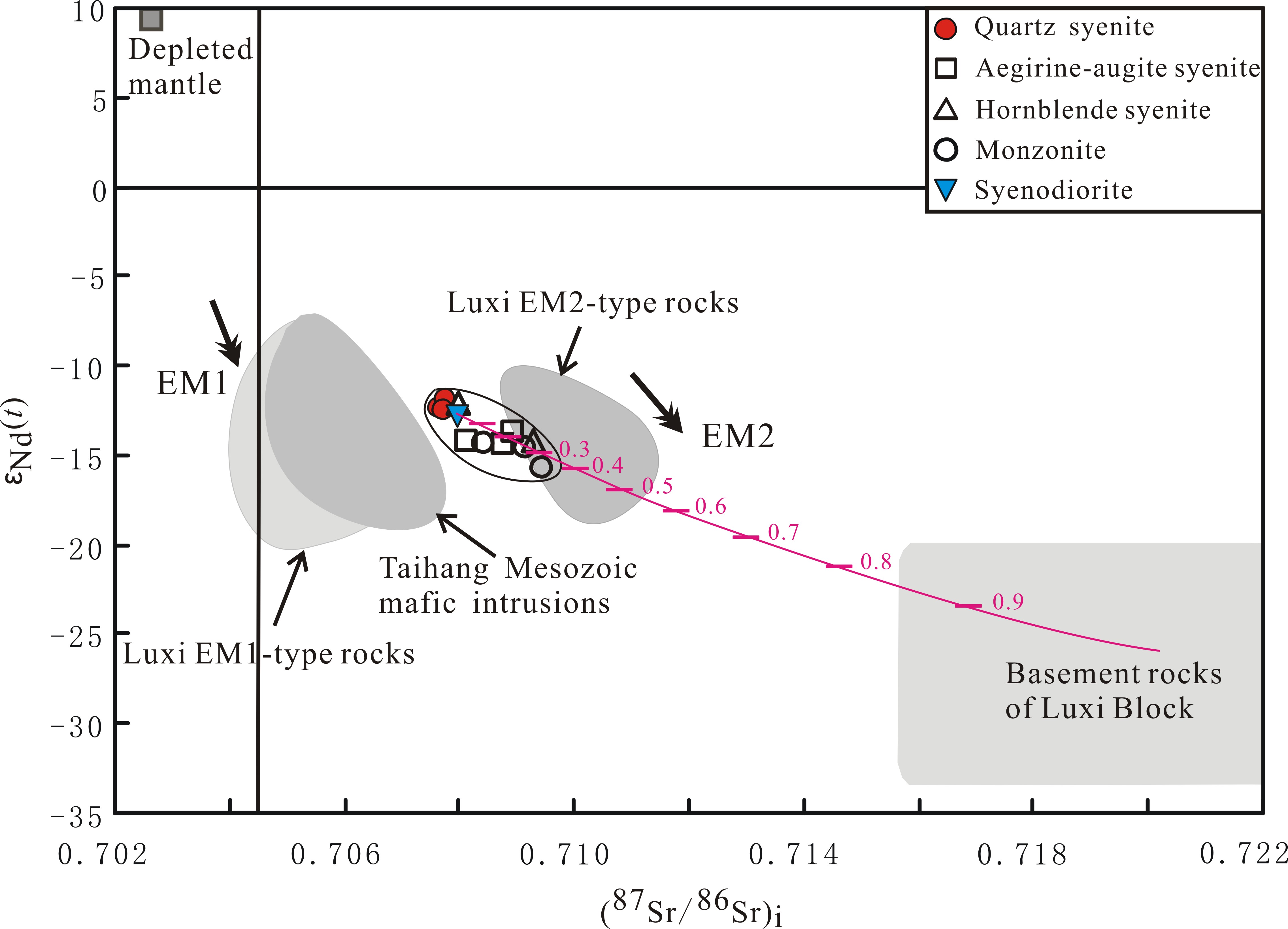Multiple crust–mantle interactions for the destruction of the North China CratonUpdate time:03 29, 2011
PhD student LAN Tingguang and his teacher FAN Hongrui research the geochemical and Sr–Nd–Pb–Hf isotopic evidence from the Longbaoshan alkaline complex. The work suggest that the ancient crust of the North China Craton was also involved in the formation of the Longbaoshan complex. Two stages of crust–mantle interaction can be identified through the formation of the Longbaoshan complex, including (1) the lithospheric mantle was metasomatized by the melts/fluids derived from the subducted crust and then transformed into an EM2 counterpart, and (2) magma derived from the M2 source underplated the ancient crust and assimilated the crust-derived materials. They thus propose that multiple crust–mantle interactions are the essential mechanism for the destruction of the NCC. The first intensive crust–mantle interaction was aroused by crustal subduction and was responsible for the lithospheric mantle destruction, and the second major crust–mantle interaction was induced by mantlederived magma underplating and was responsible for the crustal activation. Their research has been published on Lithos . Lan et al. Multiple crust–mantle interactions for the destruction of the North China Craton: Geochemical and Sr–Nd–Pb–Hf isotopic evidence from the Longbaoshan alkaline complex. Lithos, 2011, 183: 695-705 (Download Here)
Initial 87Sr/86Sr versus εNd(t) diagram for the Longbaoshan alkaline complex. (Image by LAN Tingguang)
|
Contact
Related Articles
Reference
|
-
SIMSSecondary Ion Mass Spectrometer Laboratory
-
MC-ICPMSMultiple-collector ICPMS Laboratory
-
EM & TEMElectron Microprobe and Transmission Electron Microscope Laboratory
-
SISolid Isotope Laboratory
-
StIStable Isotope Laboratory
-
RMPARock-Mineral Preparation and Analysis
-
AAH40Ar/39Ar & (U-Th)/He Laboratory
-
EMLElectron Microscopy Laboratory
-
USCLUranium Series Chronology Laboratory
-
SASeismic Array Laboratory
-
SEELaboratory of Space Environment Exploration Laboratory
-
PGPaleomagnetism and Geochronology Laboratory
-
BioMNSFrance-China Bio-mineralization and Nano-structure Laboratory

 Print
Print Close
Close
